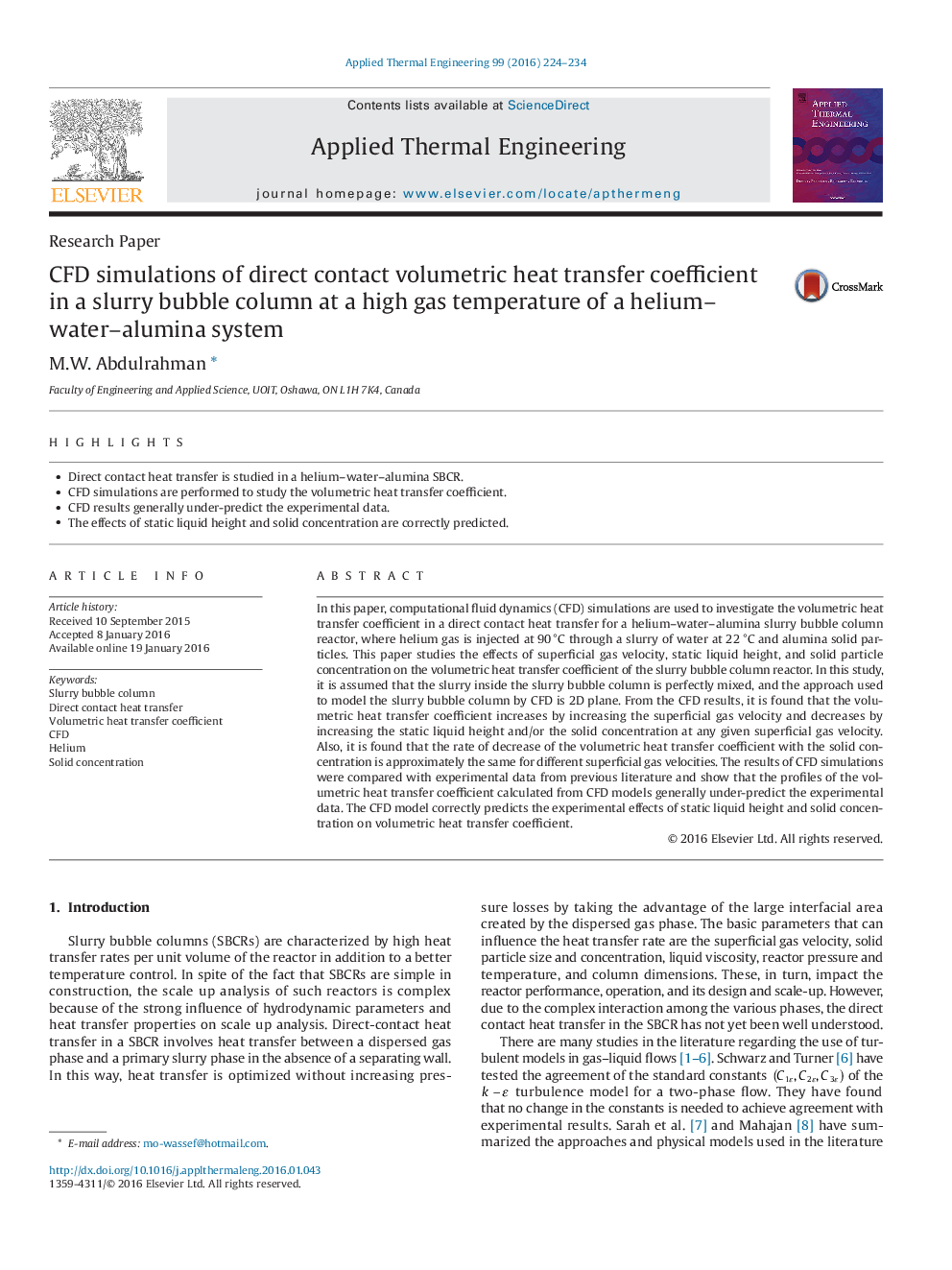| Article ID | Journal | Published Year | Pages | File Type |
|---|---|---|---|---|
| 644675 | Applied Thermal Engineering | 2016 | 11 Pages |
•Direct contact heat transfer is studied in a helium–water–alumina SBCR.•CFD simulations are performed to study the volumetric heat transfer coefficient.•CFD results generally under-predict the experimental data.•The effects of static liquid height and solid concentration are correctly predicted.
In this paper, computational fluid dynamics (CFD) simulations are used to investigate the volumetric heat transfer coefficient in a direct contact heat transfer for a helium–water–alumina slurry bubble column reactor, where helium gas is injected at 90 °C through a slurry of water at 22 °C and alumina solid particles. This paper studies the effects of superficial gas velocity, static liquid height, and solid particle concentration on the volumetric heat transfer coefficient of the slurry bubble column reactor. In this study, it is assumed that the slurry inside the slurry bubble column is perfectly mixed, and the approach used to model the slurry bubble column by CFD is 2D plane. From the CFD results, it is found that the volumetric heat transfer coefficient increases by increasing the superficial gas velocity and decreases by increasing the static liquid height and/or the solid concentration at any given superficial gas velocity. Also, it is found that the rate of decrease of the volumetric heat transfer coefficient with the solid concentration is approximately the same for different superficial gas velocities. The results of CFD simulations were compared with experimental data from previous literature and show that the profiles of the volumetric heat transfer coefficient calculated from CFD models generally under-predict the experimental data. The CFD model correctly predicts the experimental effects of static liquid height and solid concentration on volumetric heat transfer coefficient.
